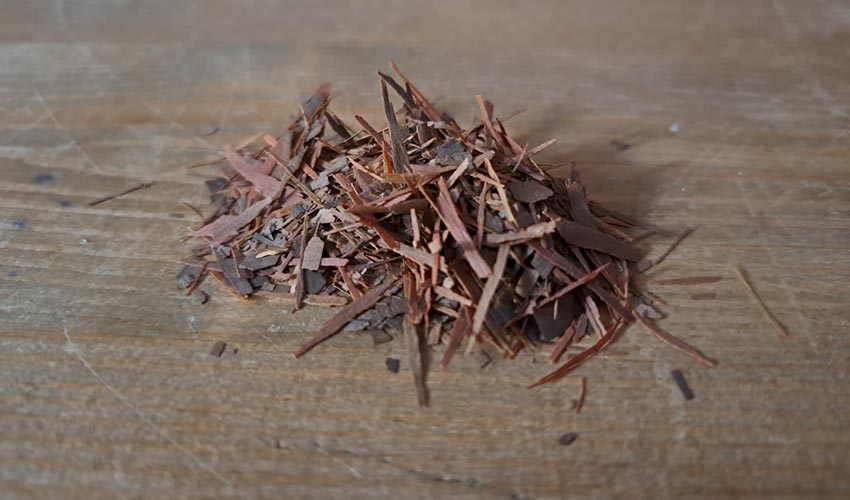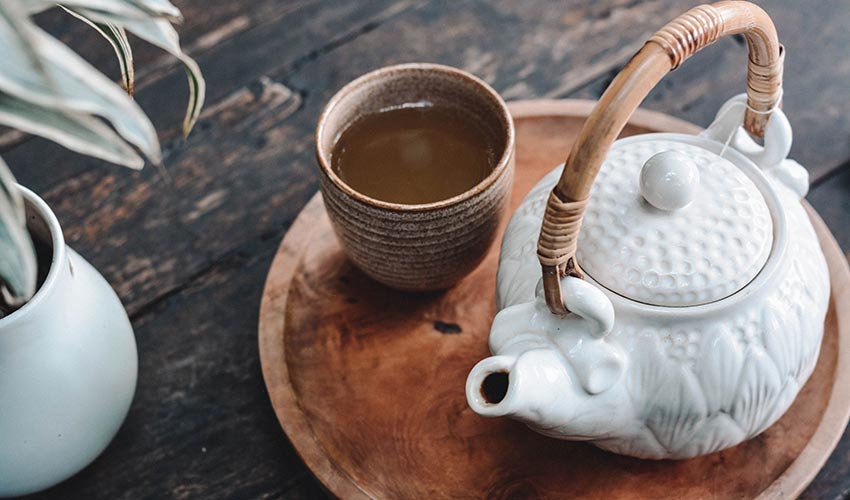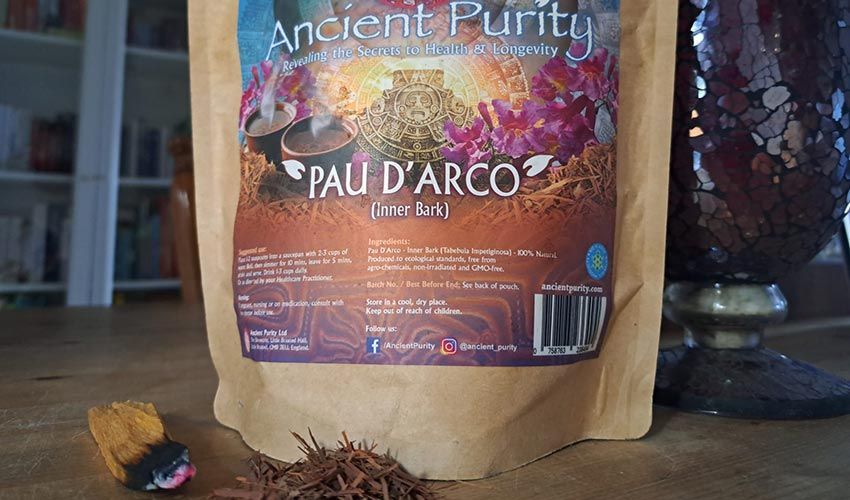Pau D’Arco... A Divine Tree & Tea of Life
Pau D'Arco, also known as Lapacho or Taheebo and nicknamed the “Divine Tree” by Brazilian Shamans, is a tree native to the rainforests of South America, particularly in countries like Brazil, Argentina, and Paraguay. For centuries, indigenous tribes in these regions have harnessed the healing properties of Pau D'Arco to treat a wide range of ailments. In recent years, this natural remedy has gained popularity worldwide due to its potential health benefits. The tree itself is incredibly hardy, and it’s hard exterior makes it resistant to disease and decay, but it’s the inner bark that we’re interested in.
If you are interested in holistic and herbal approaches to health and wellness, Pau D'Arco is a valuable addition to your natural remedies toolkit. When I found this wonderful little addition I was seeking assistance with natural ways to aid in boosting my immune system, reducing inflammation in the gut, and just gut health in general. When you open our bag of bark (we have it in tea form, instructions on how to use further along), the smell that hits your senses is so delightful; it’s a mixture of flowers, earth and tree… such a subtle yet potent powerful punchy play on the nostrils. I’d say it has quite mild vanilla and caramel notes too, it’s really quite wonderful. I’d heard of it through several people who have had our tea, and others who have used it in capsule form, everyone drawn to it for similar reasons, anti-inflammatory, to detox and boost their immune system. Then when I researched it the benefits to this beautiful medicine are vast. Let's delve into the versatile uses of Pau D'Arco and how it can be incorporated into our lives.

The Benefits and Uses
Pau D'Arco is a remarkable plant with several unique features and properties that make it stand out among herbal remedies. Here are some of the key aspects that make Pau D'Arco special:
Immune Support:
One of the most well-known uses of Pau D'Arco is its potential to boost the immune system. The bark of the Pau D'Arco tree contains compounds like lapachol and beta-lapachone, which are believed to have antimicrobial and antifungal properties. These compounds can help the body fight off infections, including bacterial, fungal, and parasitic infections and may provide support during cold and flu season.
Anti-Inflammatory Effects:
Pau D'Arco has been used traditionally to reduce inflammation in the body. Inflammation is a common underlying factor in many chronic diseases, so using Pau D'Arco as a natural anti-inflammatory agent can have a positive impact on overall health. This property may make it a valuable addition to the diets of individuals with conditions like arthritis or inflammatory bowel disease.
Antioxidant Properties:
Antioxidants are essential for neutralizing free radicals, unstable molecules that can cause oxidative stress and damage cells. Pau D'Arco contains a variety of antioxidants, including quercetin and selenium, which can help protect the body from oxidative damage and support overall well-being.
Potential Anti-Cancer Benefits:
Although more research is needed in this area, some studies suggest that Pau D'Arco may have anti-cancer properties. The lapachol and beta-lapachone in Pau D'Arco have demonstrated potential in inhibiting the growth of cancer cells. However, it's essential to note that Pau D'Arco should not be used as a standalone treatment for cancer, but rather as a complementary therapy alongside conventional medical treatments.
Gastrointestinal Health:
Pau D'Arco has a long history of use in traditional medicine for gastrointestinal issues. It is believed to help alleviate symptoms of conditions like Candida overgrowth, ulcers, and irritable bowel syndrome. The anti-inflammatory and antimicrobial properties of Pau D'Arco may contribute to its effectiveness in promoting digestive health.
Skin Health:
Pau D'Arco can be applied topically in the form of creams or salves to help with various skin issues. It is believed to have antibacterial and antifungal properties, making it useful for treating skin infections, acne, and even fungal nail infections.
Blood Sugar Control:
Some research suggests that Pau D'Arco may help regulate blood sugar levels. This makes it potentially beneficial for individuals with diabetes or those looking to manage their blood glucose levels. However, please do your research before using Pau D'Arco for this purpose.
Pain Relief:
Due to its anti-inflammatory properties, Pau D'Arco has been used to alleviate pain associated with conditions like arthritis. It may offer a natural alternative to conventional pain relievers for individuals seeking a more holistic approach to pain management.

Pau D’Arco in Healing Rituals
Pau D'Arco has been used in healing rituals by indigenous tribes in South America for centuries. These rituals often involve the spiritual and medicinal use of Pau D'Arco, highlighting the deep connection between nature, culture, and healing in these communities. Here are some ways in which Pau D'Arco is traditionally incorporated into healing rituals:
Spiritual Connection:
Pau D'Arco is considered a sacred and spiritually significant plant in many indigenous cultures. It is believed to have a spirit or energy that is harnessed during healing rituals. Participants in these rituals often seek a connection with the plant's spirit to aid in their healing journey.
Shamanic Healing:
Shamans, or traditional healers, in indigenous communities use Pau D'Arco as a tool for healing and divination. They may ingest Pau D'Arco tea or apply it topically to facilitate communication with the spirit world, diagnose illnesses, or address spiritual imbalances.
Cleansing and Purification:
Pau D'Arco is used in purification and cleansing ceremonies. The plant is believed to remove negative energies and toxins from the body and the environment. Participants in these rituals may drink Pau D'Arco tea, bathe in an infusion of the bark, or smudge with its smoke to purify themselves and their surroundings.
Healing Ailments:
Pau D'Arco is employed to treat a wide range of physical and spiritual ailments, including infections, fevers, digestive issues, and skin conditions. The plant's natural antimicrobial and anti-inflammatory properties align with the healing intentions of these rituals.
Spiritual Protection:
Pau D'Arco is often used as a protective agent to ward off evil spirits and negative influences. It is believed to create a spiritual shield around the individual, helping to keep them safe from harm.
Connection with Ancestral Wisdom:
These rituals also serve as a way to connect with ancestral knowledge and wisdom. The use of Pau D'Arco is passed down through generations, preserving cultural heritage and traditional healing practices.
Ancestral Respect:
Indigenous communities that use Pau D'Arco in healing rituals emphasize the importance of respecting and preserving the environment. Sustainable harvesting and responsible use of the plant are fundamental to maintaining the delicate balance between nature and culture.
It's important to note that Pau D'Arco healing rituals are deeply rooted in the cultural and spiritual beliefs of specific indigenous communities. Participation in or observation of these rituals are done with utmost respect for the traditions, practices, and the sacredness of the plant. Additionally, it's crucial to respect and support the preservation of these cultures and their natural resources. As Pau D'Arco's use becomes more widespread globally, it's essential to honour and acknowledge its indigenous origins and the spiritual significance it holds within these communities.

The Tree Itself
When I was doing my research on this tree, what really stood out for me was not only its inner uses, but its striking, distinctive outer appearance. So for those of you fellow nature loving geeks (that love way too much information on anything) let me paint the picture:
- Pau D'Arco trees are typically medium to large-sized, deciduous trees. They can grow to heights of up to 30 meters (around 100 feet).
- The most remarkable feature of the Pau D'Arco tree is its bark, which is often the primary part of the tree used for its medicinal properties, as we’ve discussed. The bark is thick, rough, and deeply furrowed. It has a distinctive inner bark that ranges in colour from pink to reddish-brown to purple.
- The leaves of the Pau D'Arco tree are palmately compound, typically consisting of five leaflets, although variations can occur. The leaves are lance-shaped and have a glossy, dark green colour. They provide an attractive contrast to the colourful inner bark.
- Pau D'Arco trees produce showy, trumpet-shaped flowers that are pink to lavender or even violet in colour. The flowers are relatively large and can create a striking display when the tree is in bloom. These blooms are a source of nectar for various pollinators.
- The tree produces elongated, bean-like pods that contain small, winged seeds. These pods are typically brown and woody in appearance. The tree's fruit, however, is not as well-known or utilised as the bark.
- Pau D'Arco trees have a canopy of dense, lush foliage, which provides shade and contributes to their aesthetic appeal. The dark green leaves, pink or violet flowers, and reddish-brown bark create a visually striking combination.
How to Use Pau D'Arco
Pau D'Arco is commonly available in various forms, including capsules, tea, tinctures, and topical creams. The choice of form depends on the specific health concern you wish to address. I have been using, or shall I say drinking our particular form of Pau D’Arco in tea form. It’s absolutely glorious! So if you choose to use our stuff (which of course I highly recommend) you’ll just need to pop 1-2 teaspoons of the bark into a saucepan with 2-3 cups of water, boil then simmer for 10 minutes, leave for 5 minutes to cool slightly, strain and then serve! I added our Forest Honey to my brew which added a lovely sweetness. We recommend having 1-3 cups a day if you can to receive the potential benefits. And as always, we don’t recommend taking anything long term so always cycle, break and repeat as needed.
Pau D'Arco is a versatile natural remedy with a long history of traditional use for various health concerns. While it shows promise in multiple areas, it's essential to use it as part of a holistic approach to health and wellness and not as a sole treatment for serious medical conditions. As with any herbal remedy, as mentioned, doing your own research is crucial to ensure it’s the right choice for your health concerns, especially if you are pregnant, nursing, or taking other medications. However, I don’t think there will be any circumstance (health wise) in which Pau D’Arco is not a good choice!















